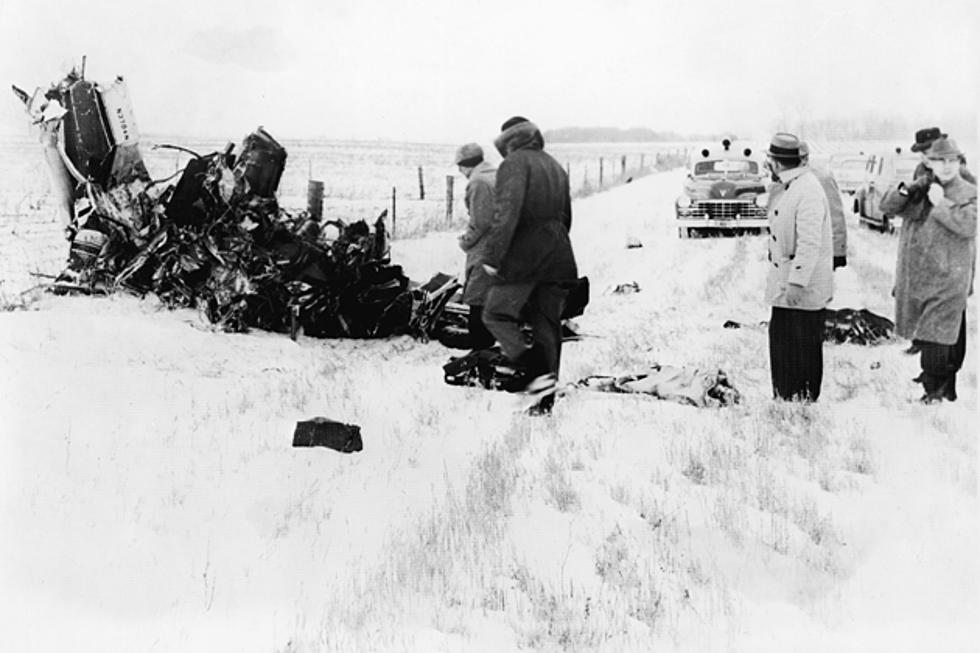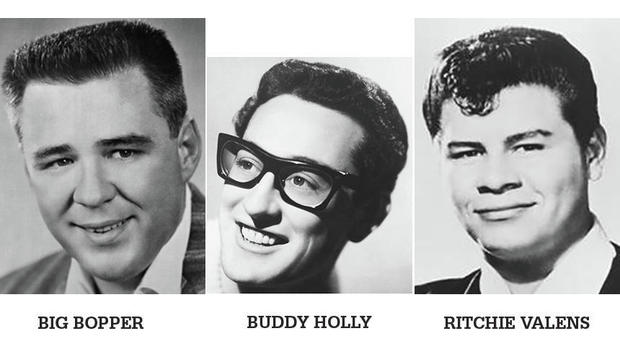The tragic event known as “The Day the Music Died” occurred on February 3, 1959, when a plane crash near Clear Lake, Iowa, claimed the lives of rock and roll musicians Buddy Holly, Ritchie Valens, J.P. “The Big Bopper” Richardson, and pilot Roger Peterson. This article aims to delve into the biographies of the individuals, the circumstances leading up to and details of the crash, its aftermath, and the inspiration behind Don McLean’s iconic song “American Pie.”
On a frigid winter night, February 3, 1959, a tragic event unfolded that would forever be etched into the annals of music history. This day, now solemnly referred to as “The Day the Music Died,” saw the untimely demise of three of rock and roll’s most promising talents: Buddy Holly, Ritchie Valens, and J.P. “The Big Bopper” Richardson. Their deaths, resulting from a plane crash shortly after takeoff from Mason City, Iowa, marked a moment of profound loss, sending shockwaves through the music industry and its fanbase worldwide. This catastrophic event did not merely signify the loss of three musical icons; it symbolized the end of an era and the birth of a legend, encapsulated by Don McLean’s poignant anthem, “American Pie,” which mourned the innocence lost on that fateful day. The incident, its precursors, and its aftermath have been the subject of extensive investigation and speculation, raising questions about fate, destiny, and the fragile nature of life itself. This introduction sets the stage for a deeper exploration into the lives of those lost, the circumstances leading to their tragic end, and the enduring legacy of their music and the impact it had on generations to follow.
In the pantheon of rock and roll, few events are as heartrending and pivotal as the tragedy that unfolded on February 3, 1959. The loss of Buddy Holly, Ritchie Valens, and J.P. “The Big Bopper” Richardson in a tragic plane crash not only stilled their vibrant voices but also marked a defining moment in the history of music. Each of these artists brought a unique flair and indelible influence to the burgeoning rock and roll scene, leaving behind a legacy that would inspire future generations. This section delves into the lives and careers of these three icons, exploring their contributions to music, their meteoric rise to fame, and the circumstances that led to their untimely demise. Through their stories, we gain insight into the profound impact they had on the music industry and their enduring influence on artists and fans alike.
- Buddy Holly was a pioneering figure in rock and roll music, known for hits like “Peggy Sue” and “That’ll Be the Day.” Born Charles Hardin Holley in Lubbock, Texas, Holly was just 22 years old at the time of his death. His innovative music and writing style influenced many future musicians, including Bob Dylan and The Beatles.
- Ritchie Valens, born Richard Steven Valenzuela, emerged as a talented musician with hits like “La Bamba” and “Donna.” Despite being only 17, Valens was a significant figure in the Chicano rock movement, posthumously inducted into the Rock and Roll Hall of Fame in 2001.
- J.P. “The Big Bopper” Richardson started his career as a disc jockey in Texas before hitting the charts with “Chantilly Lace.” At 28, Richardson was the oldest of the trio, known for his charismatic presence and contribution to the rockabilly genre.

Circumstances Leading to the Crash
The “Winter Dance Party” tour faced logistical nightmares from the start, with the musicians enduring a grueling travel schedule across the Midwest in inadequate buses prone to breakdowns and without proper heating. This, coupled with flu-like symptoms among the artists, led Buddy Holly to charter a plane to their next stop to avoid another long bus journey. The plane, a 1947 Beechcraft Bonanza, was booked through Dwyer Flying Service for Holly, Valens, and Richardson. The tragedy that struck on February 3, 1959, was not only a moment of profound loss in the music world but also a story intertwined with fateful decisions and a series of investigations that spanned many years. Among the crucial moments leading up to the crash was the coin toss between Ritchie Valens and Tommy Allsup. Valens, eager for a seat on the plane, convinced Allsup to let a coin flip decide their fate. Valens won, sealing his tragic fate, while Allsup was left to grapple with the what-ifs for the rest of his life

The Crash in Depth
Shortly after takeoff in the early hours, the plane carrying Buddy Holly, Ritchie Valens, J.P. “The Big Bopper” Richardson, and pilot Roger Peterson crashed into a cornfield less than 6 miles from the Mason City Municipal Airport. The Civil Aeronautics Board (CAB) determined the cause to be pilot error, exacerbated by poor weather conditions and inadequate flight planning. Despite over 700 hours of flight time, Peterson was not qualified for the instrument flight rules (IFR) conditions he encountered. A critical misreading of the aircraft’s altitude instruments led to a fatal descent rather than an ascent. The lack of communication and inadequate weather briefing contributed to the tragedy.
Years of Questions and Investigations
The initial CAB report did not put to rest the public and professional scrutiny. Over the years, various theories and rumors emerged, including speculation about a gun found near the crash site, suggesting a possible accidental discharge aboard the aircraft. However, a re-examination of the evidence, including a forensic analysis conducted on J.P. Richardson’s exhumed body in 2007, found no evidence supporting this theory. Richardson’s injuries were consistent with those expected from the crash impact, dispelling rumors of a shooting.
In 2015, the investigation into the crash was revisited after a petition by a retired pilot, L.J. Coon, who sought to clear Peterson’s name, suggesting potential mechanical issues with the aircraft rather than pilot error. Coon posited that the right ruddervator might have malfunctioned or there was a fuel system failure. However, the initial investigation’s findings, which noted no evidence of fire or fuel odor, were thorough. The NTSB did not reopen the case, leaving the CAB’s original conclusion of pilot error as the accepted cause.
The Day the Music Died remains a somber moment in music history, not only for the loss of three talented musicians but also for the subsequent years of investigation and speculation that followed. It underscores the fragility of life and the unpredictable nature of fate, as embodied by the coin toss between Allsup and Valens. The investigations and questions that persisted over the years reflect a collective need to understand and find meaning in the face of such a tragic event.

“American Pie” and Its Legacy
Don McLean’s 1971 song “American Pie” immortalized the crash as “The Day the Music Died.” The lyrics reflect on the loss of innocence and the changing cultural landscape of America in the 1960s, with the crash serving as a poignant symbol of the end of a golden era in rock and roll. McLean’s song remains an enduring tribute to the musicians and their impact on music history.
This tragedy not only marked a significant loss in the music world but also highlighted the vulnerabilities of touring musicians at the time. The legacy of Buddy Holly, Ritchie Valens, and J.P. “The Big Bopper” Richardson continues to influence musicians and music fans alike, underscoring the enduring impact of their brief but impactful careers.
Sophia’s Mission, established in 2019, is a registered 501(c)3 organization dedicated to creating employment opportunities for individuals on the autism spectrum, those with disabilities, and veterans, particularly in the fields of audio, radio, and media. This initiative is a significant step towards inclusivity and diversity in these dynamic industries.
In partnership with NEWHD Media, Sophia’s Mission plays a crucial role in providing a supportive platform that champions diversity and inclusivity. This collaboration extends through NEWHD Media’s iconic stations, including NEWHD New York and NEWHD Los Angeles, along with Veterans Classic Rock. These stations, accessible via the NEWHD Radio App and other platforms like Audacy and TuneIn, offer unique auditory experiences while providing employment opportunities to those who might face challenges in traditional job markets.
Father Zachary, also known as Zach Martin, is the founder of Sophia’s Mission and NEWHD Media. He has a notable background as an Orthodox Priest and a NYC Radio Personality with over two decades of experience. His work at radio stations like Q1043 and 101.1 CBS FM, and as a Syndicated Rock Host with the Jones Radio Network, showcases his deep connection with music and the community. His role in creating job opportunities for autistic individuals, those with disabilities, veterans, and individuals facing life-threatening diseases emphasizes his commitment to inclusivity and using his platforms to support marginalized groups in society.
The combined efforts of Sophia’s Mission and NEWHD Media, under Father Zachary’s leadership, emphasize the importance of inclusivity in the workplace and demonstrate a strong commitment to creating meaningful employment opportunities for individuals with unique challenges. This collaboration is an inspiring example of how organizations can contribute to positive social change by leveraging their resources and influence.
For more detailed information, you can visit their websites at Sophia’s Mission and NEWHDMedia.
- SEO Powered Content & PR Distribution. Get Amplified Today.
- PlatoData.Network Vertical Generative Ai. Empower Yourself. Access Here.
- PlatoAiStream. Web3 Intelligence. Knowledge Amplified. Access Here.
- PlatoESG. Carbon, CleanTech, Energy, Environment, Solar, Waste Management. Access Here.
- PlatoHealth. Biotech and Clinical Trials Intelligence. Access Here.
- Source: https://newhdmedia.com/the-day-the-music-died-february-3rd-1959/



